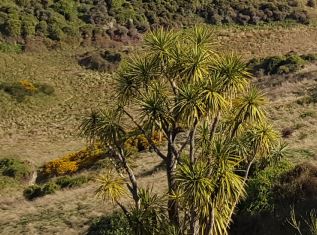adaptation
Physical and behavioural changes over time to fit new environments or conditions.
biodiversity
Many different types of plants and animals. Bio = biological (living) and diversity = variety.
conservation
Looking after natural resources such as trees, water, soil, etc. for future generations.
consumer
Animals are consumers because they cannot produce their own energy. Consumers eat producers.
decomposer
Decomposers break down dead matter – these may be bacteria or animals that feed off dead plants and animals. This process releases nutrients for producers to use as they make new food.
ecological restoration
Assisting damaged or destroyed ecosystems.
ecology
Ecology is all about living things and how they interact with each other and their surroundings.
ecosystem
The interactions of living things together with the environment that they inhabit and depend on.
endangered/threatened species
A group of animals that is declining in numbers and may become extinct soon.
endemic
Unique to a place and not found anywhere else.
environment
All the external factors influencing the life and activities of people, plants, and animals e.g. other animals and plants, water, soils, weather, daylight.
eradicate
Destroy or remove completely.
extinction
The process in which groups of organisms (species) die out.
food chain
An arrangement of organisms in a community according to which organism is eaten or eats another. Food chains always start with a plant (or plants).
food web
A system of food chains linked to one another.
habitat
A place where plants and animals live.
inorganic matter
What non-living things are made from. These are things like air, water, rocks, soil and metals. Inorganic matter is important in an ecosystem because it is what producers use, and it is the physical and chemical, non-living environment that we live in.
interdependence
Depending on each other; mutually connected.
introduced
Species that is not native and that has arrived through human activity.
invertebrate
Any animal that does not have a spinal cord at any stage of its life such as worms, insects, spiders, crustaceans and molluscs.
mammal
Warm-blooded animals with hair, that breathe air, give birth to live young, and nourish their young with milk.
native
Naturally found in a location, but may be found in more than one country.
niche
The role of an organism within its natural environment that determines its relations with other organisms e.g. its position in a food chain and food web.
nutrients
Elements or compounds essential as raw materials to sustain life.
ornamental plants
Plants that are grown for decoration.
photosynthesis
The process though which plants use water, light and carbon dioxide to create their food and release oxygen into the air.
pollution
The presence of unwanted matter or energy (heat, noise, etc.) that have harmful effects on living or non-living matter.
producer
A plant that makes its own energy from the sun through photosynthesis.
QEII National Trust
An organisation that helps to preserve and protect special areas of land. They try to secure long-term protection of natural and cultural features on private land.
regenerate
Grow after loss or damage.
restoration
Helping something that has been damaged, degraded, or destroyed.
riparian
Situated or taking place along or near the bank of a river.
sediment
Material, originally suspended in a liquid, that settles at the bottom of the liquid when it is left standing for a long time.
Material eroded from rocks that is transported by water, wind, or ice and deposited elsewhere.
species
In classification, a species is a group of closely related organisms that can reproduce. A group of similar species forms a genus. In the scientific name of an organism, the second name is its species (for example, people are Homo sapiens - our species is sapiens).
sustainable
Using natural resources without destroying the ecological balance of an area.




